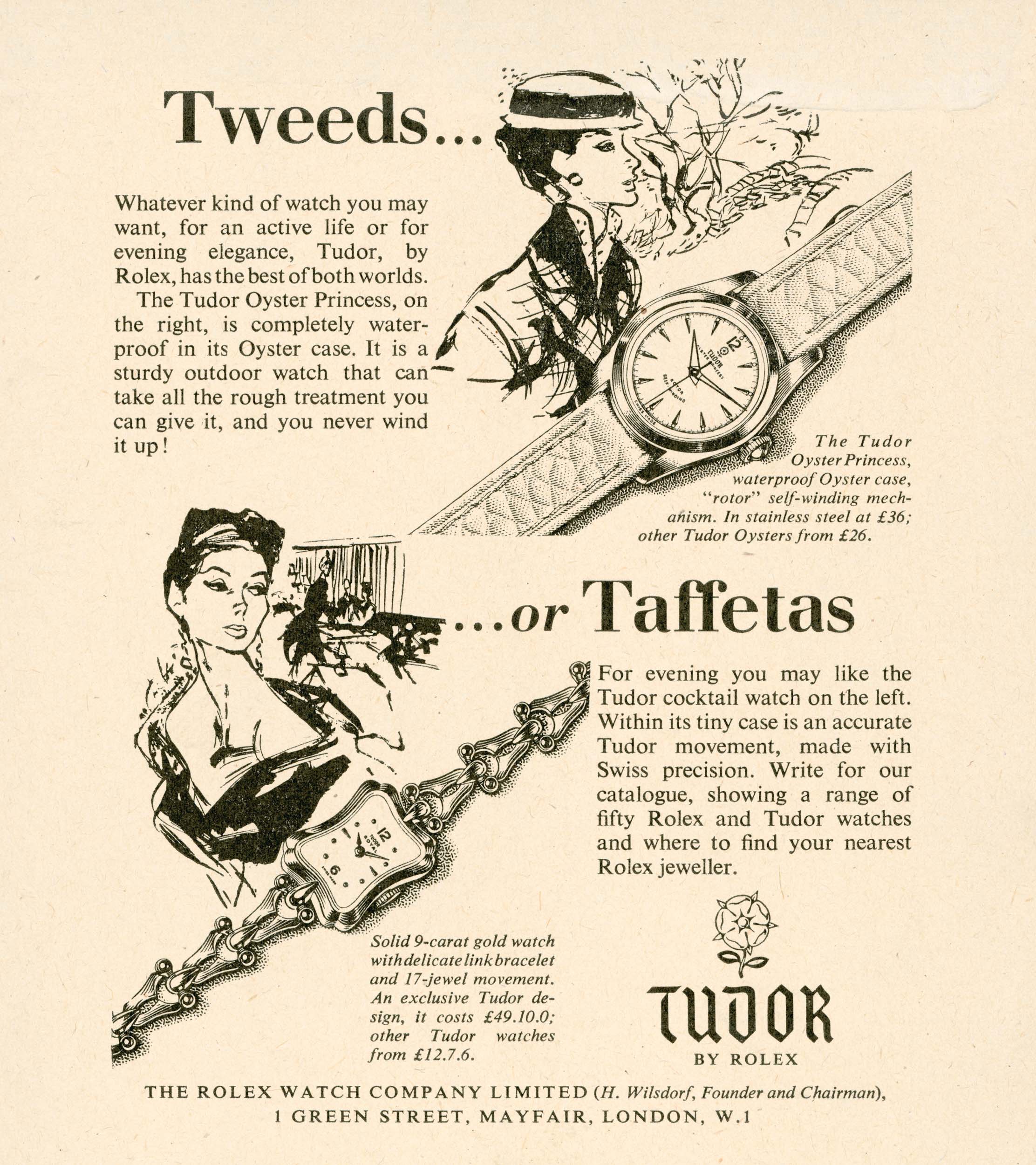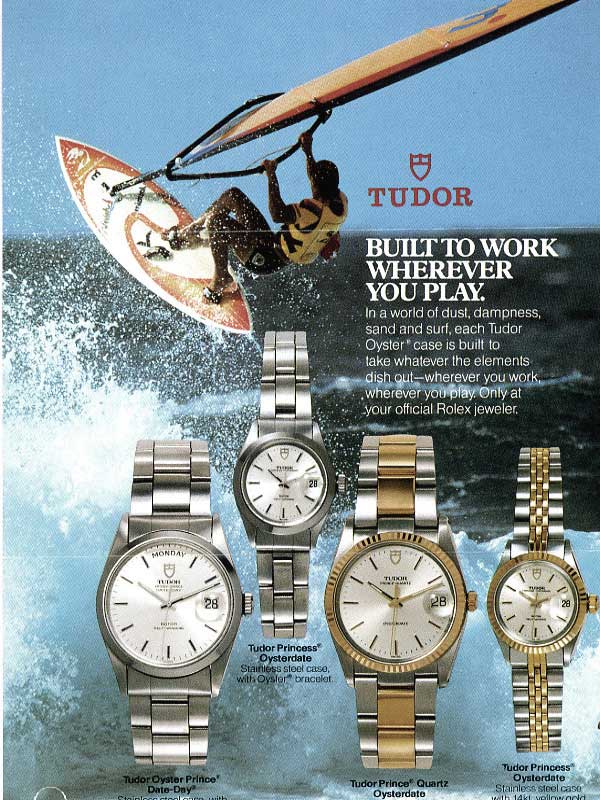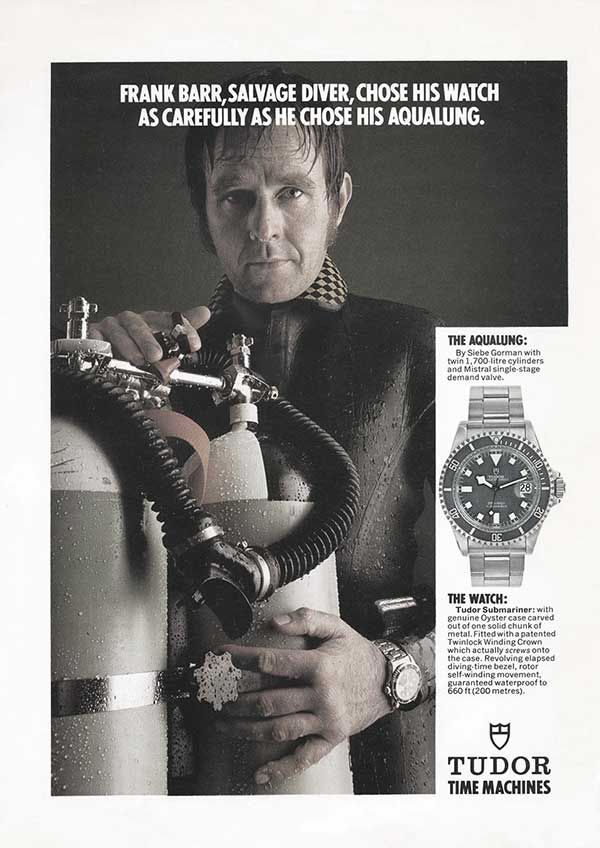
A watch brand in its own right today, Tudor was registered by the company "Veuve de Philippe Hüther" for the founder of Rolex, Hans Wilsdorf in 1926, in order to allow the many watch enthusiasts to benefit from the major advances of the Rolex brand. , at an affordable price…
“For several years, I have studied the possibility of making a watch that our dealers can sell at a lower price than our Rolex watches and that is worthy of the same traditional confidence. I therefore decided to found a separate company, in order to manufacture and sell this new watch. This company is called “Montres TUDOR S.A.” —Hans Wilsdorf
In World history, The Tudor era will mark the end of the civil war known as the "War of the Roses" and covers the reign of a dynasty of five monarchs who helped make England a major European power. .
In the history of watchmaking, Tudor will first be known for marketing original Rolex watches at a lower price and then in 1957, for serving as a full-scale test laboratory for its "big sister". »Rolex. Secondly, Tudor was the first watch brand to combine its range with women, and Hans Wilsdorf, aware of the preponderant role of women in modern society, infused this reality into the DNA of his brand. A feature that will allow Tudor to decline many of its men's models in the right size to be worn by women, a clever duality that is easily verified regardless of the period of manufacture considered.
Initially marketing rectangular, tonneau or bevelled watches, these watches designed for both men and women are distributed alongside the Rolex brand in distant geographical areas or new markets such as Australia where the marketing will be carried out through the company "Veuve de Philippe Hüther"
In 1936, Hans Wilsdorf took over the brand on his own and the rose of the Tudor dynasty appeared on the brand's dials. Production during the interwar period continues to rely on the same axes as at its origin.
In 1954, TUDOR embarked on a new path that would help to strengthen its notoriety and lay the foundations of its legend. the brand's first diver's watch, the TUDOR Oyster Prince Submariner reference 7922, sees the light of day: It will be an immediate success, both in the seabed and the world of scuba diving, due to the formidable epic of Jean Yves Cousteau and its world of silence represents at the end of the fifties, the new frontier, the new territory to conquer for man….. The Submariner would conquer the professional and military world to become one of the most sought-after icons.
In 1957, the first alarm watch was produced by the Rolex Workshops for Tudor: the Advisor, followed by the first ultra-thin watch with a waterproof case: the Oysterthin, a watch that draws on the firm's experience after the commercialization of the Rolex Precision 6424 model and the great success noted by the enthusiasm of the public at the time for an "All-Terrain-Chic" model.
In 1969, the brand was still very attached to the Rolex range and after representing the famous rose of the Tudors, the brand changed its logo to take the form of a shield to symbolize solidity. On this occasion, the Prince range evolves and we see appearing on the Oyster 7017/0 model, a day window at the top of the dial in addition to the date at three o'clock. This model will be one of the most popular in the range.
At the same time, Tudor will develop its Submariner range in a direction resolutely turned towards professional underwater use with the arrival of new "Snowflake" dials, the origin of which is linked to a need of the French Navy for the part aesthetics and in terms of the mechanical part with the use of robust ETA automatic movements that are easy to maintain by the watchmaking workshops of the armed forces.
It should be noted that all Tudors models were until 1990 assembled by Rolex watchmakers and that all models were sold with bracelets and boxes signed and marked Rolex.
In constant search for innovation Tudor will develop its Submariner with the addition of a whole series of improvements (evolutions subsequently taken over by Rolex) such as Sapphire crystals, the Fliplock folding clasp, the notching of the directional rotating bezels and all the procession variations that we have seen in the evolution of the brand's design. It should also be noted that Tudor also offers the Submariner in a smaller size than its standard model, allowing women's wrists to enjoy the joys of underwater exploration.
In the range of its chronographs, it is not uncommon to find that the Rolex Cosmograph Daytona model has taken over many of the details of the Tudor Chronograph Prince model, such as the bakelite tachometer bezel, then its all-steel evolution and its special dial versions. such as the Tudor “Tiger” model (in reference to Tiger Wood) and its nuanced colored dials.
Evolutions tested on the Tudor range since 1969, with the edition of multiple highly sought-after variants, which by their observed differences and rarity delight the collector since more than twenty distinct references with multiple variations (but retaining all the main characteristics of the Tudor Submariner) will be produced until 1999, the year that marks the end of this model for Tudor.
2015, the year of independence.

With the North-Flag unveiled at the Salon Horloger in Basel in 2015, Tudor took a new course and freed itself from the shadow of its big sister Rolex. Like its new slogan “Born to Dare” which means “Born to Dare”, Tudor will use its first in-house movement for this new model.
It will also develop the Pélagos range (a model that had already marked the great return of Snowflake dials) with a left-handed version.
But even more striking and surprising, Tudor is continuing its transformation with the evolution of its famous Heritage Black Bay range by creating an earthquake in the watchmaking microcosm: the ETA movement of its Heritage Black Bay chronograph is replaced by the MT5813 movement equipped with vertical clutch and column wheels derived from Breitling's B01 chronograph movement. An industrial exchange of good practices which in return will allow the Breitling brand to use a Tudor movement base in its Superocean models.
...And like the two main Tudor monarchs (Henry VIII of England and Queen Elizabeth the First) who orchestrated the transformation of a second-rate kingdom into a powerful Renaissance state, Tudor watches emerge from the Rolex shadow to conquer new shores and reach their Eldorado... materializing today the famous "daring alternative" wanted by Hans Wilsdorf at its creation.
